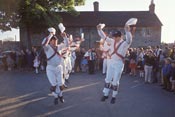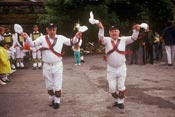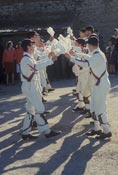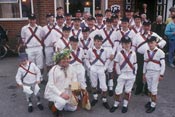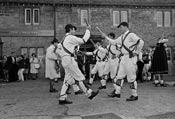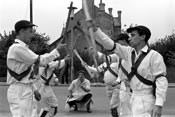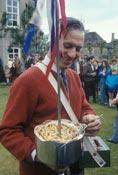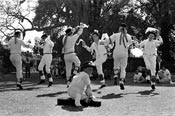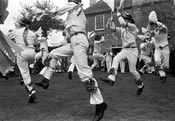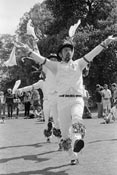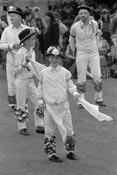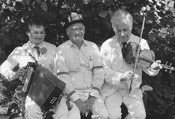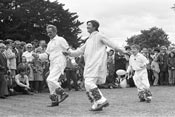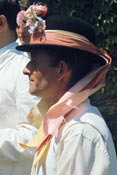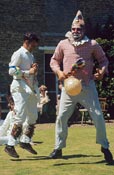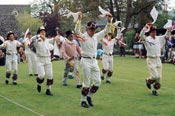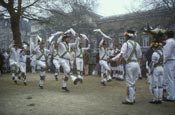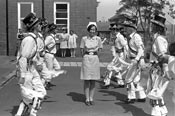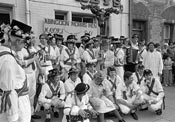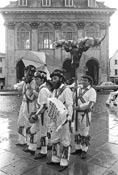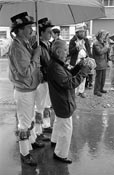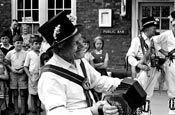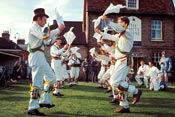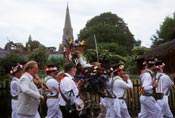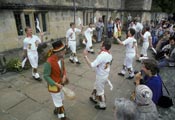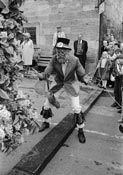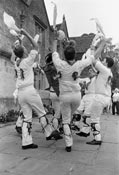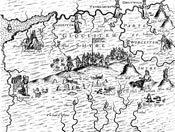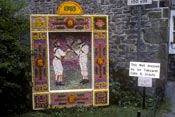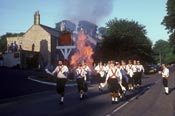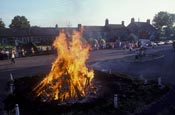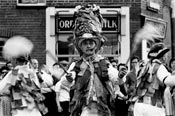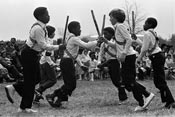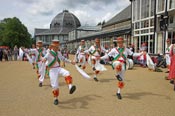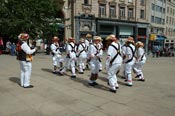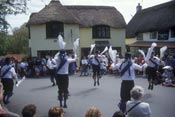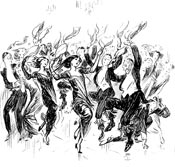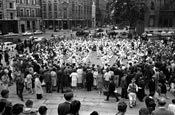
The origins of morris dancing remain matters of speculation – though singing and dancing have been modes of expression since time began. References to actual morris dancing first appeared in the 15th century and seems to have been a regular part of village life ever since. It had almost died out towards the end of the nineteenth century until, on Boxing Day 1899, one Cecil Sharp happened to come across the Headington Quarry Morris Dancers which, to cut a long and convoluted story short, sparked the First Folk Revival and led to the canonisation of C Sharp as the patron saint of folk song and dance collectors everywhere, even if he remains a controversial figure. The cartoon at the end of the section makes reference to his missionary zeal. Numerous ‘folk revivals’ have followed, though in all but a few places morris dancing has become more of a recreation for enthusiasts than an intrinsic part of village life. Obviously it is convivial, there are copious quantities of beer around, the steps and styles are challenging to learn and perform, there is study involved, it is good exercise (though with no visible effect on some of those guys), it provides ample opportunity for extroverts to show off. Still, arguments rage about whether women or mixed teams should be allowed, whether teams should dance the steps of another team, whether new dances are ‘traditional’ or ‘unauthentic’, whether northerners should be dancing a southern tradition, whether southerners should be sword dancing. Folk singers feel at liberty, after all, to sing and perform in myriad ways. Collections does have its opinions but is not foolish enough to make too much of them. There is a token showing of ‘revival’ morris sides here, but as we are to do with ‘calendar’ customs, most of which have been going for centuries, these pictures are really about the four ‘Cotswold Morris’ sides which are generally agreed to have an impressively long history, Headington Quarry (see above), Abingdon, Bampton and Chipping Campden, the only one that is actually in the Cotswolds. The other three are near Oxford. There is much information on Google on these four sides.
